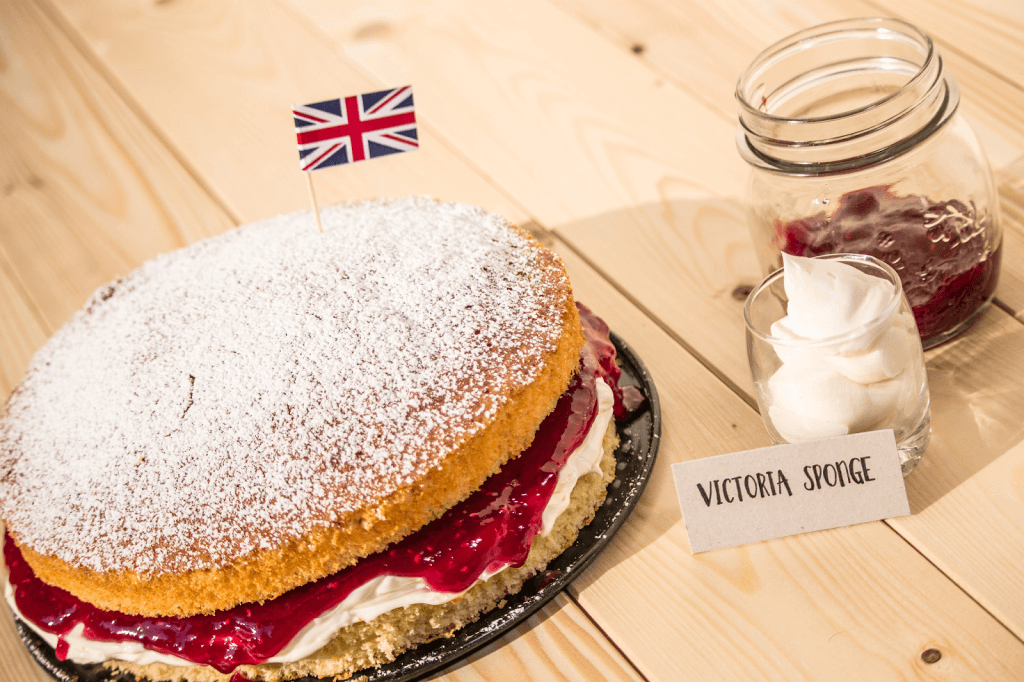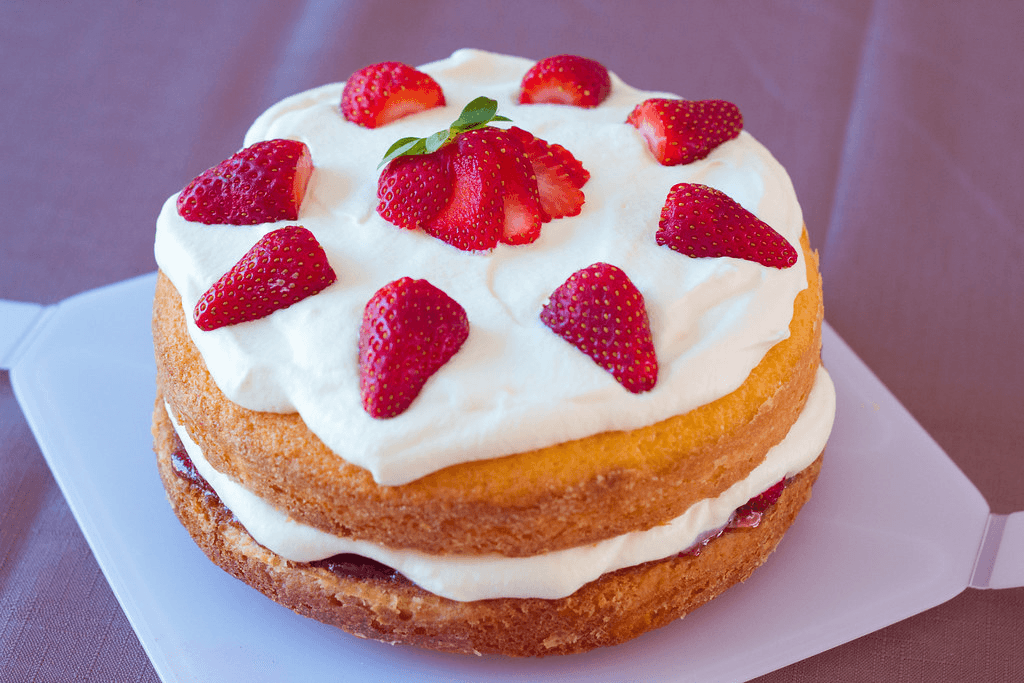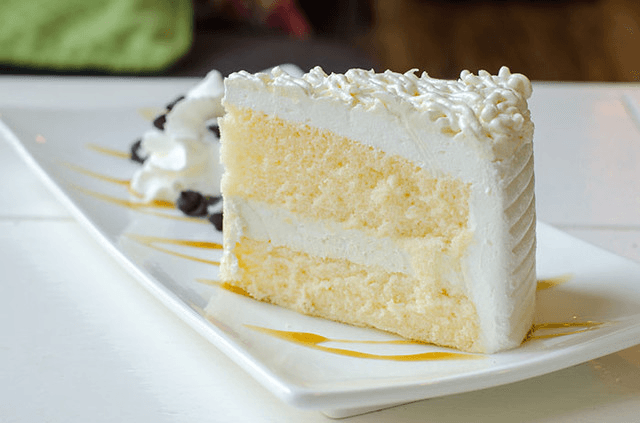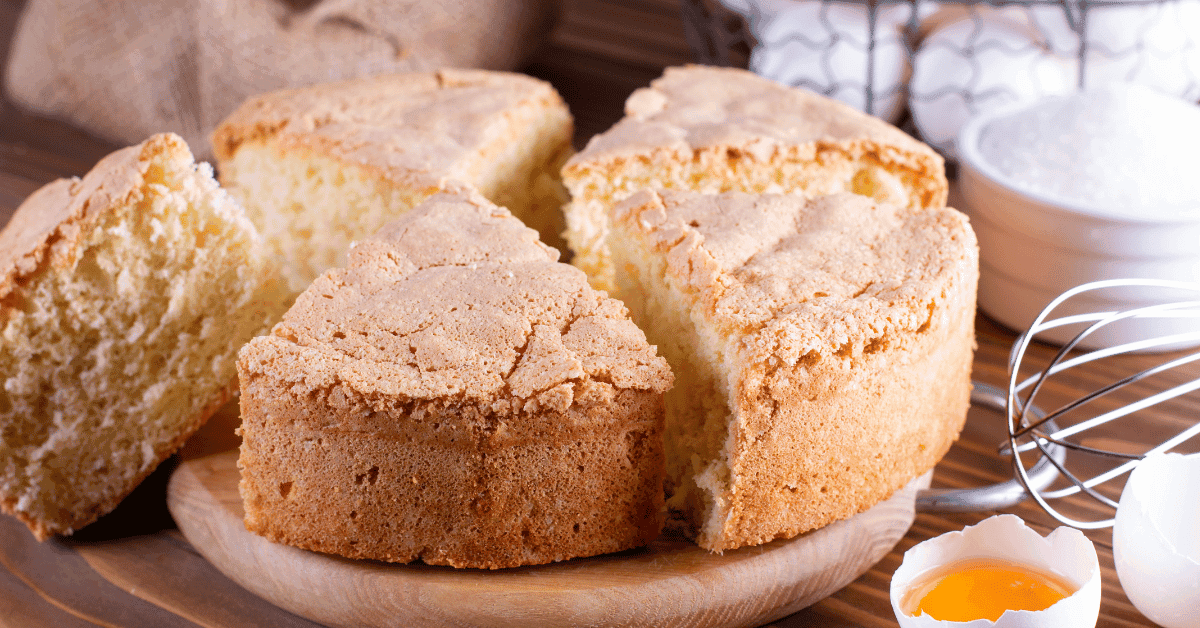Indulgence without compromise– that’s the magic of these gluten-free sponge cake recipes.
If you’re a celiac or just someone living a gluten-free lifestyle, you probably know how hard it is to crave cakes and pastries. But really doesn’t have to be like that.
With proper ingredient substitution, everyone can enjoy delicious and fluffy baked goods without risking an unwanted reaction.
So, get ready to indulge in these mouth-watering treats that are easy to make and, most importantly, 100% gluten-free.
Table of Contents
Common Ingredients in Gluten-Free Flour
You’ll often find ingredients like rice flour, tapioca flour, and xanthan gum in most gluten-free cake recipes.
These flour alternatives are a lifeline for individuals with gluten sensitivity. So thanks to these recipes, you can enjoy different sponge cakes despite your dietary restrictions.
Here’s what you should expect with these healthy and safe ingredients:
| Ingredient | Purpose |
|---|---|
| Rice Flour | Provides a light and fluffy texture |
| Tapioca Flour | Adds chewiness. |
| Xanthan Gum | Acts as a binder and gives structure. |
Remember, knowing your ingredients is the key to making a perfect gluten-free sponge cake.
Gluten-Free Sponge Cake Recipes
Excited to explore your options for gluten-free cakes? Let’s dive into six delectable options:
All these recipes are carefully crafted with gluten-free ingredients, offering a healthy alternative without compromising taste and texture.
Gluten-Free Victoria Sponge Cake

Victoria_Sponge_Cake_%28250677289%29.jpeg
The Victoria Sponge Cake is a classic British cake that has stood the test of time as a beloved tea-time treat.
Wondering why it’s called victoria sponge cake? Well, it was named after Queen Victoria, who was known to enjoy a slice of this cake with her afternoon tea.
This cake is renowned for its simplicity, elegance, and delightful flavors. It’s a two-layer cake made from a light, airy sponge filled with jam and cream and typically dusted with powdered sugar.
- Sponge Layers: The cake consists of two layers of sponge cake baked to a golden hue. Make sure you’re using a gluten-free flour blend for your cake batter.
- Jam Filling: A layer of fruit jam, often strawberry or raspberry, is spread onto one of the sponge layers. This adds a fruity sweetness that complements the cake’s delicate flavor.
- Cream Filling: The other sponge layer is traditionally filled with whipped cream, which adds richness and a luscious texture to the cake. Remember to use dairy-free alternatives for an allergy-friendly recipe.
- Assembly: The jam and cream-filled layers are then sandwiched together, creating a beautiful cake with alternating layers of color and texture.
Another delectable British bread you can try and make gluten-free is English Muffins. Check our post to ensure you’re following Gluten-Free English Muffin Recipes.
Gluten-Free Vanilla Sponge Cake

Now, are you craving a delightful and moist sponge cake? Well, this sponge cake recipe will surely satisfy your tummy.
Vanilla sponge cake is simple, safe, and full of flavor. You’ll be surprised by how easy it is to make; the vanilla variations are endless.
- Start with a gluten-free flour blend. You can purchase or make your own rice flour, potato starch, and tapioca flour mix.
- Choose a pure vanilla extract for the best flavor. You might also experiment with vanilla bean paste or even fresh vanilla beans.
- Try coconut sugar or stevia instead of regular icing sugar for ingredient substitutions.
Gluten-Free Chocolate Sponge Cake
image/chocolate-cake-jpg-0
Diving into our next recipe, we will whip up a delectable Chocolate delight that will satisfy your sweet tooth.
This gluten-free Chocolate Sponge Cake is rich, satisfying, safe, and healthy for those with gluten sensitivity or celiac disease.
You’ll need the following ingredients:
- A variety of chocolates. You can choose from dark, milk, and white to give the cake a complex flavor profile.
- Gluten-free flour blend ensures the cake’s light and spongy texture.
- Baking powder, which helps the cake rise to perfection.
Remember, baking temperatures are crucial. Set your oven to 350°F (175°C) for best results. Let the sponge cake cool completely before serving.
Gluten-Free Lemon Sponge Cake
Lemon_Sponge_cake_Citronhalvm%C3%A5ne.jpg
For your next baking venture, you will love the refreshing zing of this Lemon delight!
This gluten-free Lemon Sponge Cake will tickle your taste buds with its tangy citrus flavor. Here’s a quick peek at the process:
- Start by practicing your lemon zesting technique: use a fine grater or zester, ensuring you only collect the bright yellow zest, not the bitter white pith.
- Mix gluten-free flour, baking powder, and a pinch of salt.
- Whip eggs and sugar until light and fluffy, then delicately fold in the dry ingredients, followed by the lemon zest and juice.
- Bake until golden and springy to the touch.
Consider citrus flavor pairings for your icing or filling. Lemon curd and whipped cream make great choices.
Gluten-Free Strawberry Sponge Cake

9827093964
Next, let’s look at this sweet and fruity favorite: Strawberry Sponge Cake. This gluten-free version is just as delicious and fluffy as its traditional counterpart.
When selecting strawberries, consider these strawberry varieties:
- June-bearing: These strawberries produce a large, concentrated crop in June. They’re perfect for a fresh, summery sponge cake.
- Everbearing: These strawberries produce a smaller crop throughout the growing season, ensuring you have fresh berries for your cake year-round.
- Day-neutral: These strawberries produce fruit regardless of the day’s length, making them perfect for a sponge cake any time of the year.
For baking techniques, ensure your gluten-free flour and other ingredients are mixed well to avoid a grainy texture. Also, be gentle when folding in the whipped egg whites to maintain the sponge cake’s delicate crumb.
Gluten-Free Coconut Sponge Cake
A_slice_of_coconut_cake.jpg
Lastly, let’s explore the tropical and flavorful Coconut Sponge Cake. This gluten-free delight is an amazing addition to your tropical dessert exploration.
Here’s a quick rundown of the ingredients:
- Gluten-free flour: The perfect substitute for regular flour while retaining the fluffy texture.
- Coconut milk: This ingredient amps the tropical vibe and lends a creamy texture.
- Desiccated coconut adds a burst of coconut flavor and unique texture.
- Eggs and sugar: Essential for any sponge cake, they give it a sweet and airy consistency.
While savoring this dessert, you’re not only enjoying a tropical delight but also reaping coconut health benefits. This includes its high fiber content and healthy fats.
History of Gluten-Free Baking

Historically, gluten-free baking has been a challenge for many due to the unique properties of gluten.
You see, gluten is a protein found in wheat, barley, and rye that gives dough elasticity. However, the rise of conditions like celiac disease and gluten intolerance has driven the evolution of gluten-free alternatives.
The impact of celiac disease on food culture has been significant. As awareness grows, so does the demand for gluten-free options.
This has pushed the food industry to develop innovative replacements for gluten in baking. Ingredients like almond flour, coconut flour, and xanthan gum have become popular alternatives.
Do you want to whip up a 100% safe and quality cake? Check out our LiveGFree Cake Mix Recipes.
Importance of This Healthy, Gluten-Free Recipe
It’s essential to note the significance of this health-conscious recipe that doesn’t include gluten.
In baking, making a gluten-free sponge cake might seem challenging, but it’s an important step towards gluten intolerance awareness and providing celiac disease insights.
Adopting gluten-free recipes, like this sponge cake, is a proactive approach to ensuring everyone can enjoy the joy of baking, even those with dietary restrictions. It allows for including individuals who might otherwise miss out due to health concerns.
The recipe uses gluten-free alternatives that are equally delicious and maintain the cake’s fluffy texture.
What Makes These Sponge Cake Recipes Gluten-Free
You might wonder what makes these baking instructions suitable for a gluten-free diet.
Well, the secret lies in using gluten substitutes and alternative flours. Instead of conventional wheat flour containing gluten protein, these recipes call for gluten-free options such as almond flour, coconut flour, or a gluten-free blend.
These flours replicate the texture and structure of traditional flour without causing any harmful effects to those with gluten intolerance or celiac disease. They’re safe, digestible, and pack a punch of flavor too.
Also, to ensure the sponge cake rises nicely and has a good crumb, you’ll often find ingredients like xanthan gum or baking soda included as gluten substitutes.
Expert Tips
Baking a perfect dessert can be challenging, so let’s delve into some expert tips to get it right.
When working with gluten-free ingredients, precision is key. Pay close attention to your baking techniques. Gluten-free flours require more moisture, so don’t be afraid to add more liquid.
Ingredient substitutions are another crucial aspect. Instead of regular flour, use gluten-free alternatives like almond flour or coconut flour. They provide a delicious flavor and a perfect texture to your sponge cake. Remember to add xanthan gum; it acts as a binder without gluten.
Frequently Asked Questions
Are there any gluten-free substitutes for common baking ingredients like baking powder or baking soda?
Yes, there are gluten-free versions of baking powder and soda. Gluten-free flour options often include xanthan gum to replicate gluten’s elasticity. Always ensure these products are certified gluten-free for your safety.
Can I use regular milk in gluten-free baking, or should I use a specific type of milk?
Yes, you can use regular milk in gluten-free baking. However, if you’ve milk allergies, consider lactose-free alternatives like almond, soy, or rice milk for safe and delicious gluten-free baking results.
What are some common mistakes to avoid when baking gluten-free sponge cake for the first time?
Avoid using the wrong gluten-free flour selection, which can ruin your cake’s texture. Ensure allergic reaction prevention by checking all ingredient labels.
Don’t overmix the batter, and ensure your baking powder is gluten-free.
How do the texture and taste of gluten-free sponge cake differ from regular sponge cake?
Gluten-free sponge cake may present challenges in texture, often being denser. However, taste exploration can yield delightful surprises, as ingredients like nut flours provide unique, rich flavors, making it a safe, delicious alternative.
Can gluten-free sponge cake be frozen for future consumption? If yes, what is the best way to do it?
Absolutely! You can freeze your gluten-free sponge cake. Use proper freezing techniques and packaging methods. Wrap it tightly in cling film, then foil. Store in an airtight container to maintain its freshness and quality.
Final Thoughts
In conclusion, using gluten-free alternatives doesn’t mean sacrificing taste or texture. As seen in these delectable gluten-free sponge cake recipes, you can enjoy the delicious baking world using the proper alternatives.
Want to explore more celiac-friendly recipes? Check out my full list here: Gluten-Free Recipes.
Other Gluten-Free Recipes
- 5 Absolutely Easy Gluten-Free Recipes
- 5 Best Gluten-Free And Dairy-Free Recipes
- 5 Best Gluten-Free Calzone Recipes
- 5 Best Gluten-Free Dessert Recipes
- 5 Best Gluten-Free English Muffins Recipes
- 5 Best Gluten-Free Garlic Bread Recipes
- 5 Best Gluten-Free Vegan Recipes
- 5 Classic and Gluten-Free French Bread
- 5 Classic LiveGFree Pancake And Baking Mix Recipes
- 5 Delectable Gluten-Free Ravioli Recipes
- 5 Delectable LiveGFree Cake Mix Recipes
- 5 Delicious and Gluten-Free Crockpot Chicken Recipes
- 5 Delicious Gluten-Free Dinner Recipes
- 5 Delightful Gluten-Free Zucchini Recipes
- 5 Easy and Gluten-Free Pretzels Recipes
- 5 Healthy and Gluten-Free Stuffed Mushroom Recipes
- 5 Krusteaz Gluten-Free Flour Bread Recipes
- 6 Delectable and Gluten-Free Sponge Cake Recipes
- 6 Delicious Gluten-Free Vegetarian Recipes
- 6 Delightful Caputo GF Flour Recipes
- 6 Savory Gluten-Free Mexican Recipes
- LiveGFree Baking Mix Recipes
- Are Reese Pieces Gluten-Free? - November 8, 2023
- Is Fudge Gluten-Free? - November 7, 2023
- Is Milky Way Gluten-Free? - November 6, 2023

